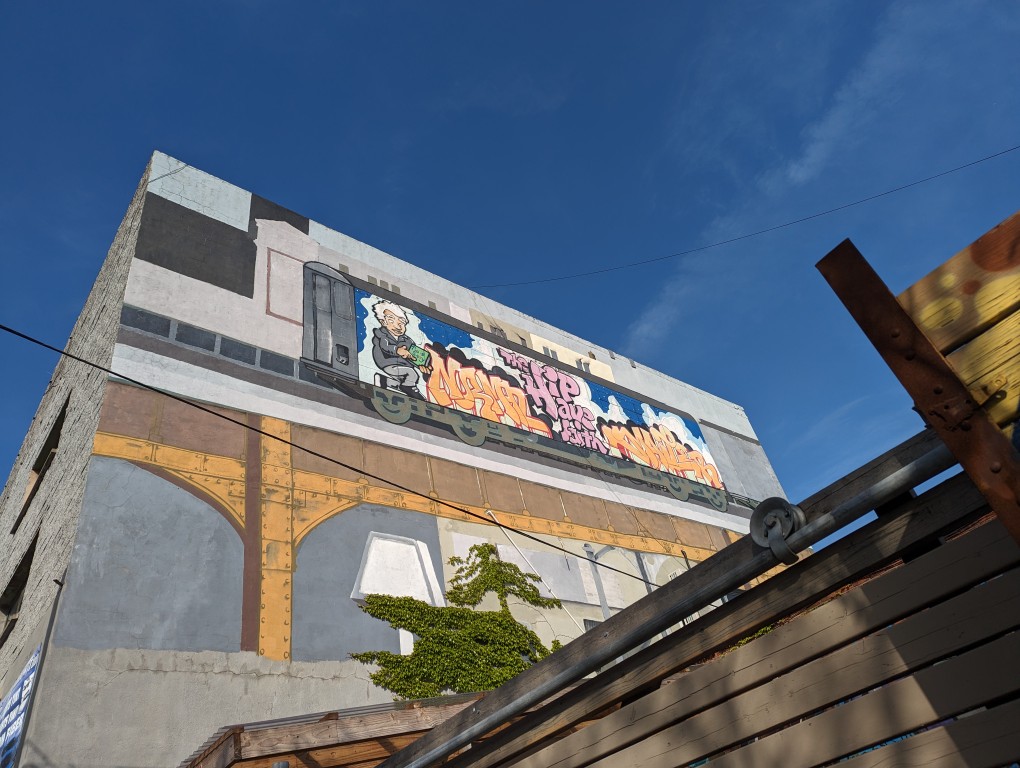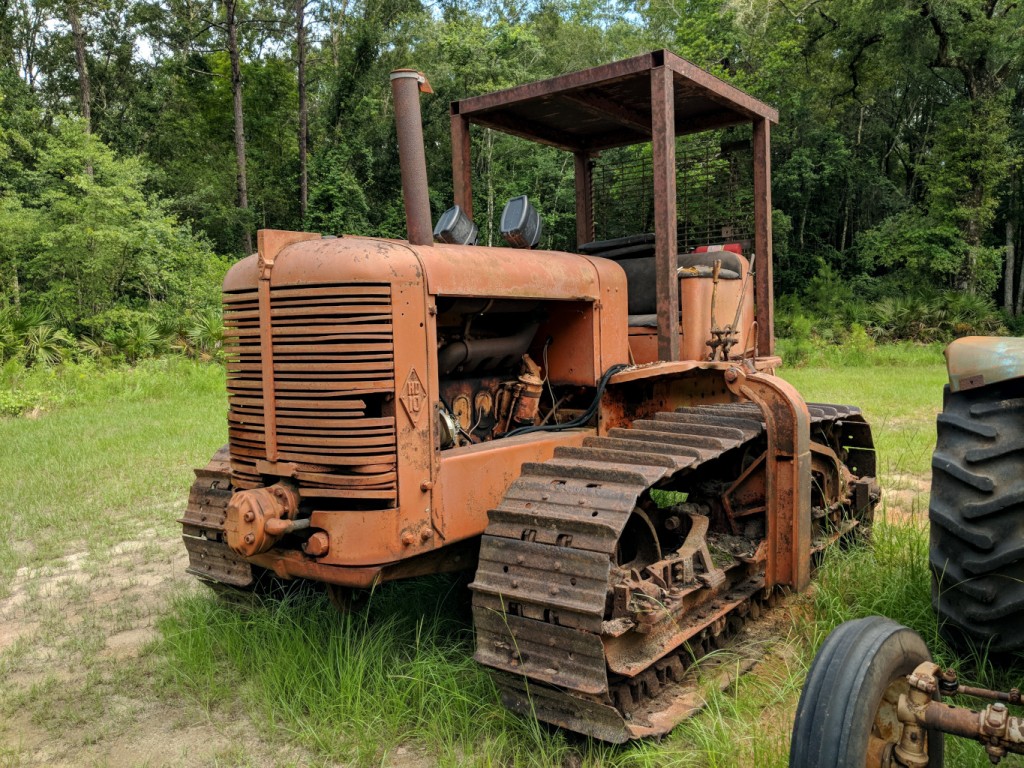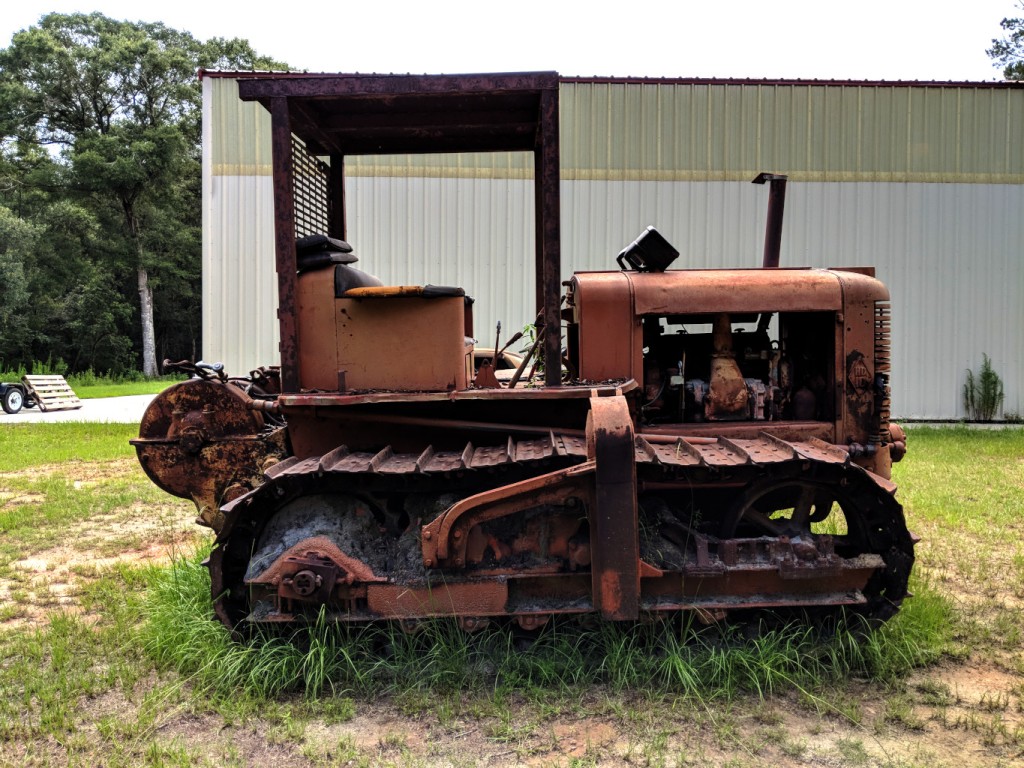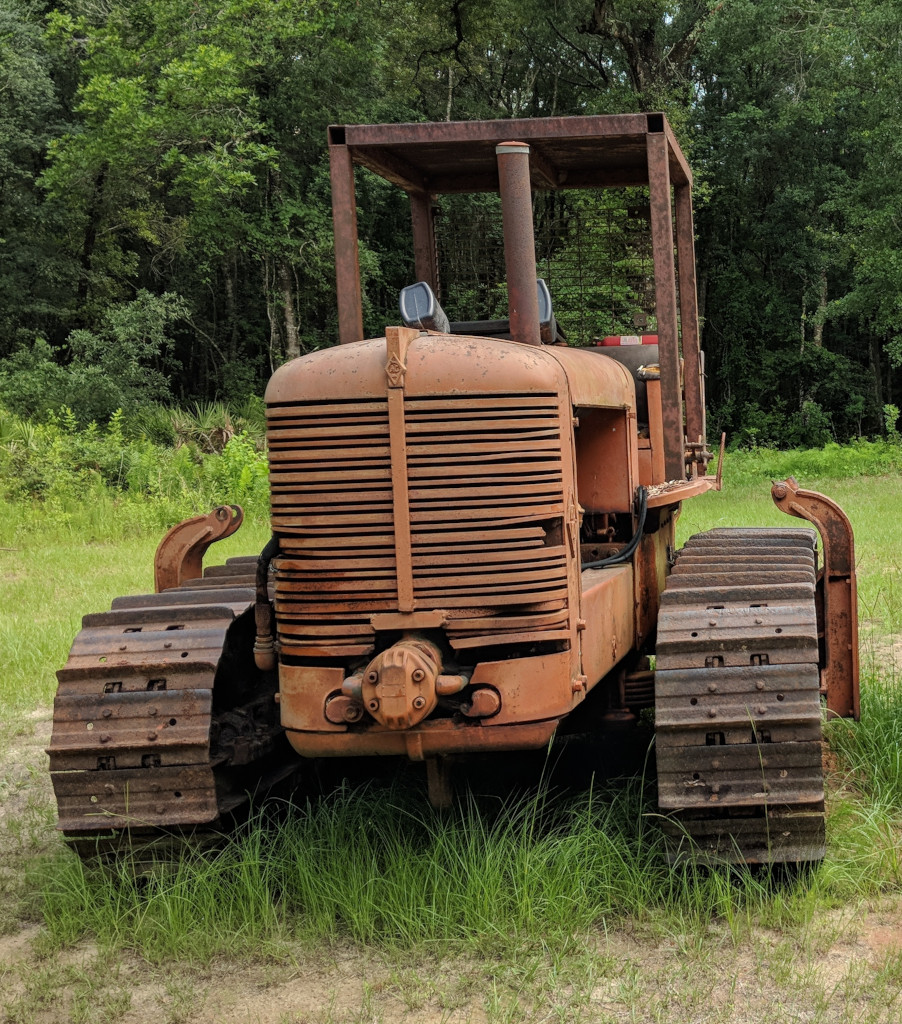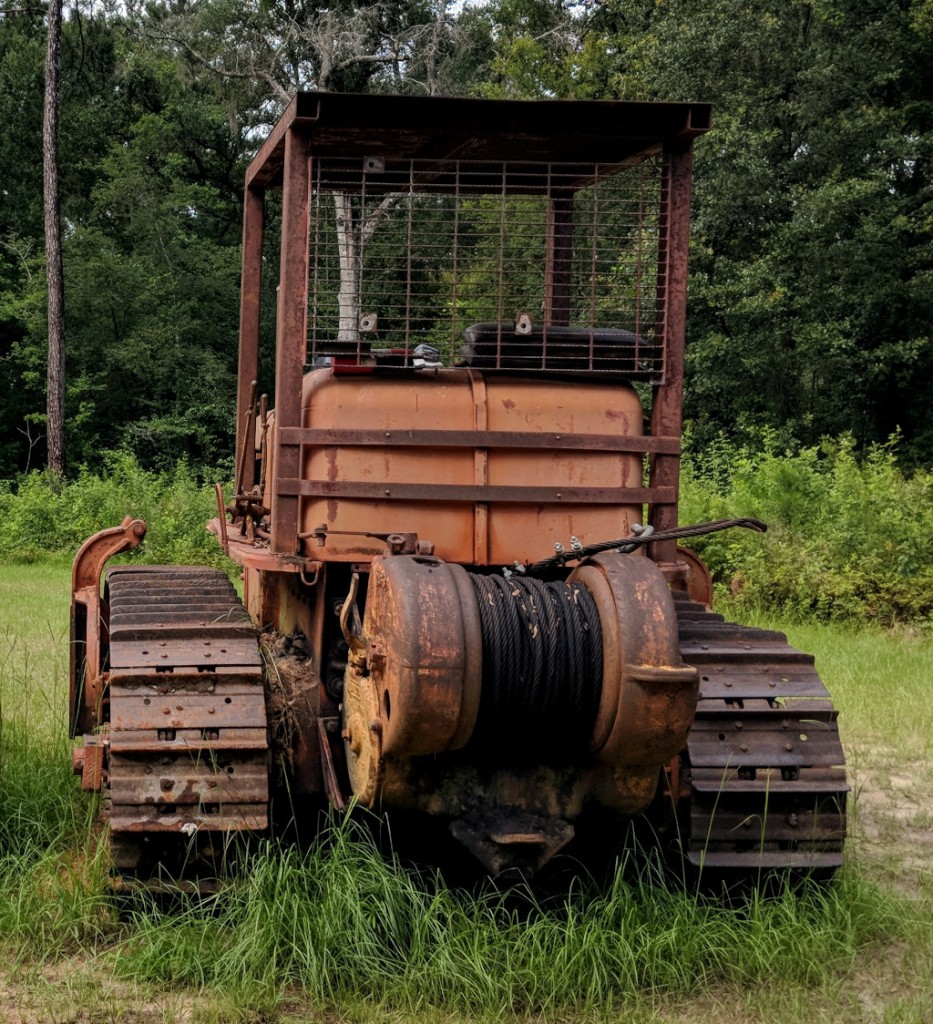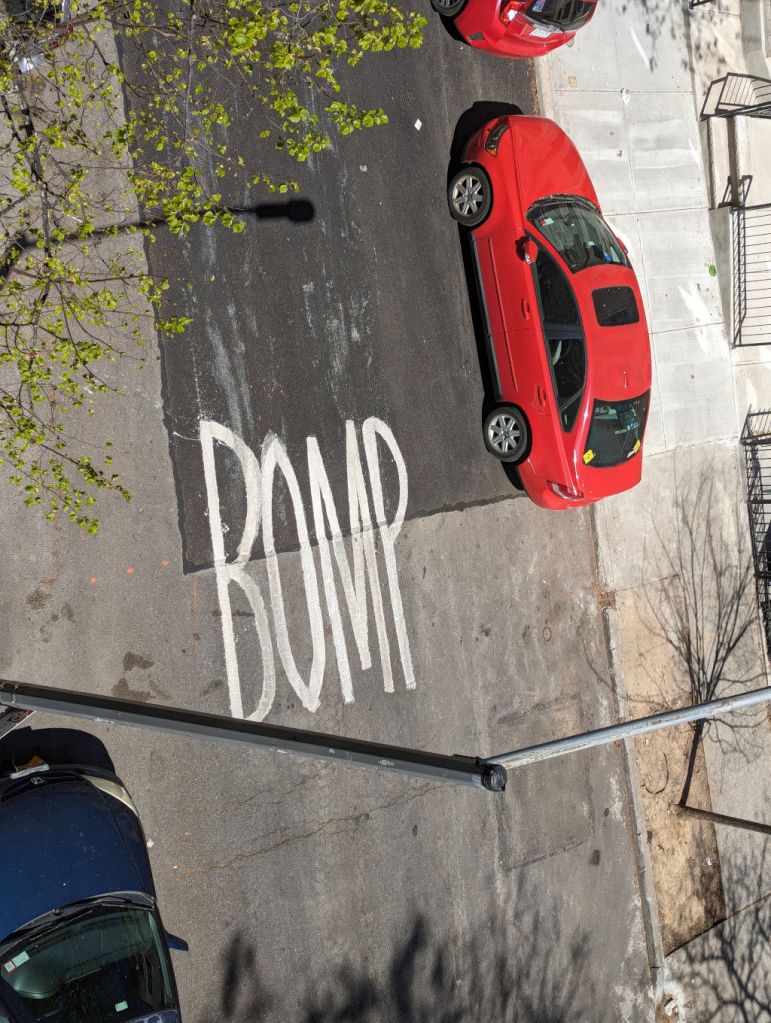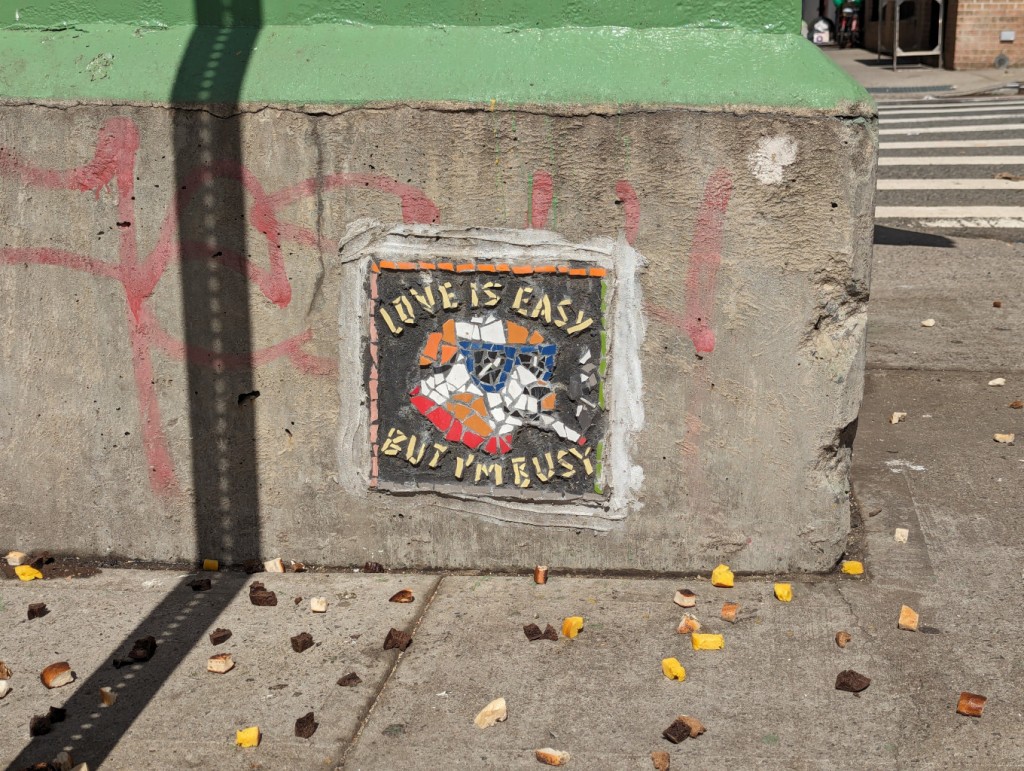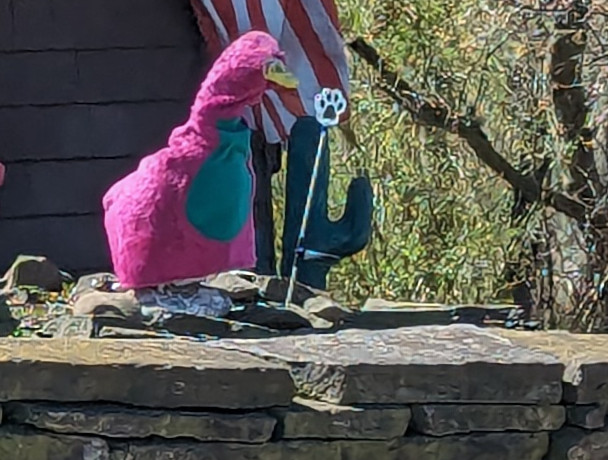
There’s a house on Stow Road in Kent, Ohio that has a ceramic duck in front of it. Normally, this would be nondescript. However, these fine people are kind enough to keep their ceramic duck clothed year round. When I was a graduate student, he wore many different outfits–from suits to puffer jackets. When I was in Kent a few weeks ago visiting my dissertation director Mack Hassler, I drove by the Duck House to see if they were keeping up the tradition, and I was very happy to learn that they are! On that sunny day, the duck was dressed up like Barney the Dinosaur.

